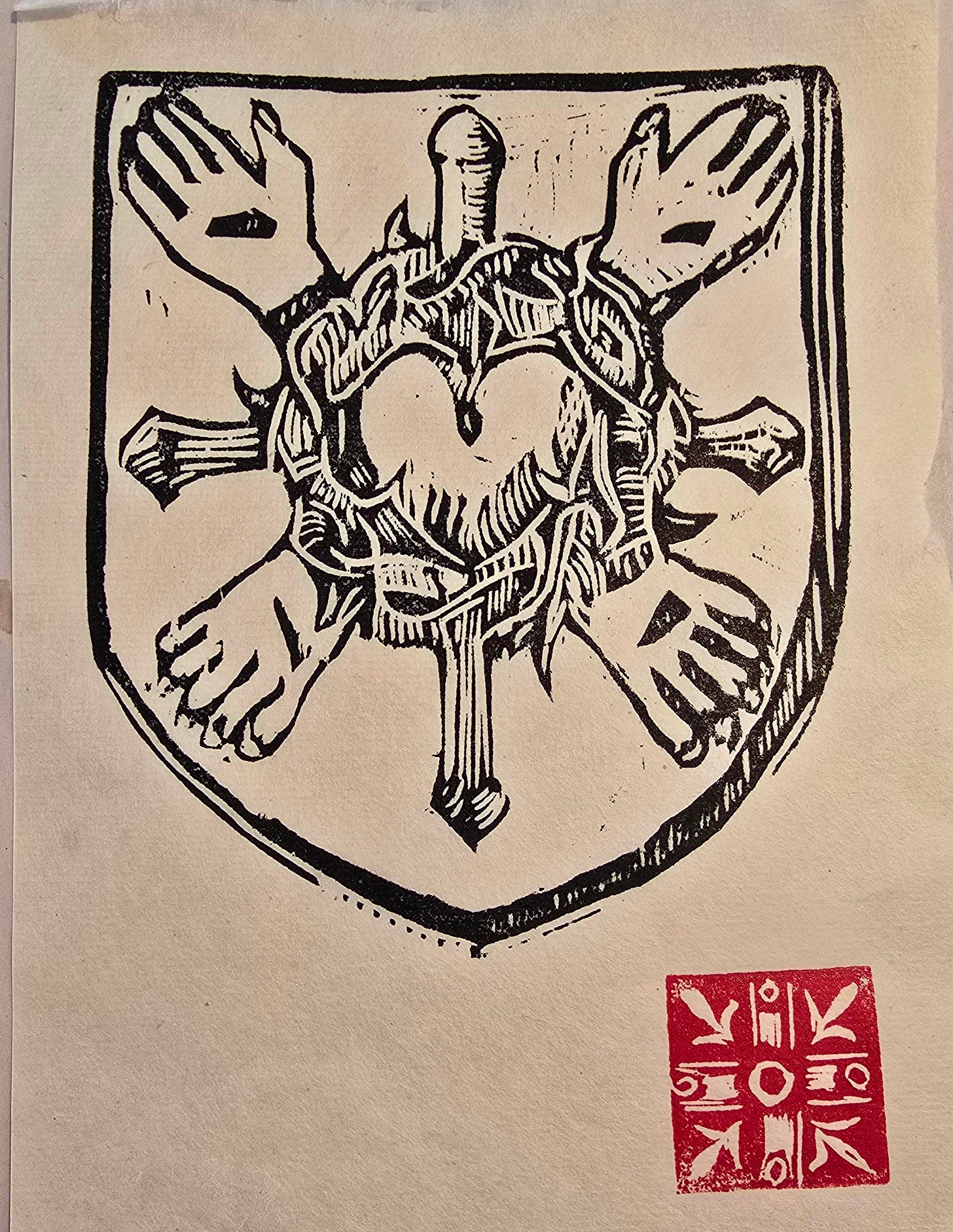[Since my reversion to my childhood Catholic faith, I’ve been very wary of the pentagram or five-pointed star, sometimes known as a pentangle or Solomon’s Seal. I spent a lot of time in the world of the New Age and am well aware of the many different ways this is used in occult writings and witchcraft. So in this post, I am not recommending uncritical acceptance of anything you see with a pentagram on it. For instance, the inverted pentagram is used by certain satanic groups. Equally, it is a symbol which has been used by cultures all over the world since as far back as 3500 BC, and has been a Christian symbol as well, as we shall see.]
I was reading Tolkien’s translation of Sir Gawain and the Green Knight, and came upon the description of Gawain’s shield:
I was struck by the association of the pentagram, or Endless Knot, with the virtue of such a knight as Sir Gawain, which caused some cognitive dissonance when comparing my associations gathered from popular views of it. Later the author of Sir Gawain goes on to elaborate five sets of five which the pentangle on his shield symbolises. They are:
faultless in his five senses
his five fingers failed at no time
firmly on the Five Wounds all his faith was set
ever from the Five Joys all his valour he gained (and because of this he had an image of Our Lady painted on the inside of his shield)
five virtues (free-giving, friendliness, chastity, chivalry, piety)
I also noticed how the author links the Five Wounds of Christ to the symbol. There are some interesting things to ponder here, which I’ve drawn on the writings of Valentin Tomberg to bring out.
What is a wound? “a door through which the objective exterior world intrudes into the interior of the closed system of the subjective interior world”. If we think of the Five Wounds, and their counterpart of stigmata in great saints like St Francis of Assisi, we can see how this works. The Divine is allowed to work in this fallen world and to remediate it.
An eye is like a wound by which the objective reality of the outer world imposes itself on us, I may wish to see beautiful flowers, but my eyes make me see a pile of dung. Therefore the eye imposes truth instead of fantasy.
The five senses are all like this - wounds by which the outer world imposes itself on us. But senses are organs of perception, not action or will.
However, imagine that the four limbs and the heart as organs of action are wounded: you get a situation where personal will which is tainted by the Fall, can be ‘nailed’ and Divine Will can act instead.
This is what is happening in the stigmata; it is the principle of the magic of the sacred pentagram of the five wounds. Christ shows us the way on the Cross.
He shows us how the three practices of poverty, chastity, and obedience nail the five dark currents of the personal will to allow the Divine Will to act:
the vow of obedience nails the will-to-greatness of the heart
the vow of poverty nails the desire to take and the desire to keep of the left and right hands
the vow of chastity nails the desire to advance and to hold on at the expense of others of the left and right feet
To relate all of this to our theme of art and making, I will draw a little on T S Eliot’s essay Tradition and the Individual Talent.
Eliot says:
“The emotion of art is impersonal. And the poet cannot reach this impersonality without surrendering himself wholly to the work to be done. And he is not likely to know what is to be done unless he believes in what is not merely the present, but the present moment of the past, unless he is conscious, not of what is dead, but of what is already living.”
and
“What happens is a continual surrender of himself as he is at the moment to something which is more valuable. The progress of an artist is a continual self-sacrifice, a continual extinction of personality.”






Very good. Letter V is one my favorites. It is impressive how each read of MotT is profitable, I've been reading almost every day for 4 years and I still feel that I'm on the surface.